The race to increase recycled content in packaging
December 4, 2017

In recent years, the consumer goods industry has made significant progress on improving the recyclability of packaging and ensuring that packaging is recoverable. In contrast, incorporating recycled content in plastic packaging, especially post-consumer recycled (PCR) content, has been a more elusive priority. But, this is changing quickly. Sustainable packaging leaders demonstrate that providing demand for recycled plastics by purchasing post-consumer resin is one of the best tools at our industry’s disposal to forge a circular economy.
Importantly, increasing demand for PCR will be essential in developing strong domestic end markets for recycled materials. SPC project associate Jessica Edington explains that, especially in light of China’s Green Fence and National Sword initiatives, “The most critical and impactful step companies can take in light of the China ban is to commit to using post-consumer resin wherever possible.” Edington’s recommendation demonstrates that the chronic need for using PCR in packaging has become acute.
To explore how consumer packaged goods (CPG) companies can best embrace PCR in their packaging portfolio, let’s examine successful case studies of early adopters and innovators in designing packaging with high portions of PCR or that is entirely made of PCR. In addition to considering best-in-class case studies for both rigid and film applications, considering strategies of where PCR can be most easily implemented can catalyze quicker adoption to stimulate end markets sooner rather than later.
Going all-in on PCR
PepsiCo, for one, aims to “Achieve Best-in-Class recycled content for Beverage primary packaging” as a broad objective in its Global Sustainable Packaging Policy. Across brands, PepsiCo increased the use of recycled PET or rPET by 4% to an impressive 139 million pounds annually in 2015. As one of the largest purchasers of rPET in the consumer goods space, PepsiCo’s brands are led by Naked Juice, whose square bottles use 100% PCR. By not using virgin PET feedstock, Naked Juice bottles save 25% of the energy typically used in conventional manufacturing processes.
Another giant in the beverage industry, Nestlé Waters North America, has ushered a large portfolio of products towards PCR plastic packaging. Most notable is its brand, Resource water that has achieved 100% recycled content. Nelson Switzer, chief sustainability officer for Nestlé Waters North America, says that increasing the percentage of rPET in bottles “has created a demand for rPET, helping encourage suppliers to produce the material. This has had a knock-on effect where the demand for post-consumer PET has increased, and recycling programs were encouraged to ensure the supply of high-quality rPET meets Nestlé’s standards for bottling water.”
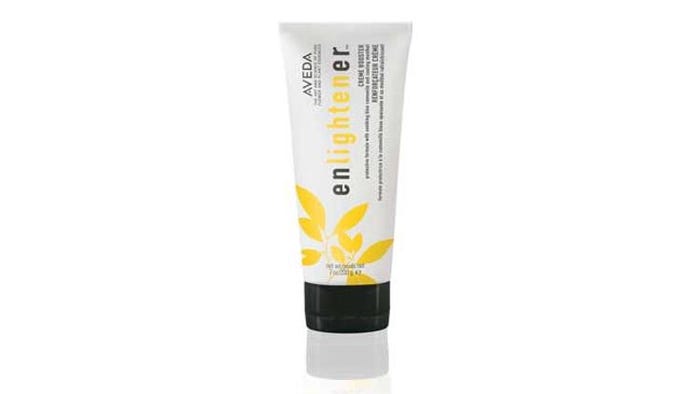
In much the same way, Aveda is a leading personal care products manufacturer boasting a line of skin care and hair styling products using PET bottles or jars, 85% of which are made entirely of PCR at present time. Likewise, 90% of high-density polyethylene (HDPE) bottles in Aveda’s product line are made from 80% PCR and several new shampoo and lotion products are packaged in 100% PCR HDPE. Accounting for both PET and HDPE, Aveda calculates that its use of PCR reduces the need for virgin resin by 600 tons each year. Aveda products that don’t currently use PCR include glass packaging and plastic tubes.
Seventh Generation (a Unilever subsidiary) has been a pioneer in sustainable packaging and has publically committed to manufacturing all packaging from recycled or bio-based materials by 2020. As a strategy, Seventh Generation works to use as much PCR as is functionally possible, and then to use bio-based plastics for the remaining portion.
One 2016 innovation is Seventh Generation’s 100-oz laundry detergent bottle made from 80% recycled HDPE, 17% bio-based PE and 3% colorant. Derrick Lawrence, director of packaging development, explains that the 80% level of recycled content was derived from extensive testing and acknowledging that at a higher level, stress fractures become possible. Lawrence highlights further that, “Being a large buyer of PCR, keeping this stream as clean as possible is extremely important to us.”
Leveraging PCR for transport packaging
It’s clear that using PCR in packaging with stringent performance and color parameters is possible with thoughtful design and rigorous testing. Concerns that visual impairments or lack of consistency are inescapable when using PCR is no longer a rule, but an exception. Yet, for many brands and retailers, using PCR in packaging components that are not consumer facing is a sensible first step while more intensively exploring and testing PCR in consumer-facing applications.
The Assn. of Plastics Recyclers (APR) has spearheaded a renewed effort to engage brands and retailers in integrating PCR into products. APR’s new Recycling Demand Champion Campaign calls upon major brands and retailers to commit to using polypropylene (PP) and polyethylene (PE) PCR in manufacturing “Work in Process” items like bins, totes, pallets and slip sheets. While the campaign is expanding, initial members include Target, Procter & Gamble, Campbell Soup, Coca-Cola, Keurig Green Mountain, Berry Global, Envision Plastics, Plastipak, Merlin Plastics and KW Plastics.
Other methods of integrating PCR into transport packaging can range from incorporating recycled content into items like bubble or foam wrap for products, reusable crates or incidental packaging components—like PakTech’s 96% PCR handle for beer cans, which has been used by hundreds of craft breweries.
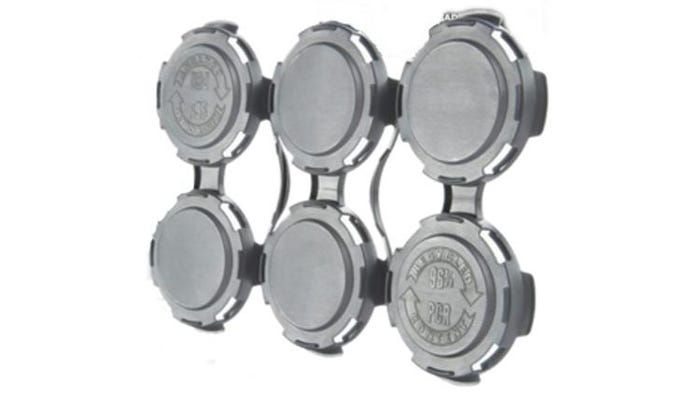
Using PCR in non-recyclable or hard-to-recycle packaging
Not all packaging one sees on a drugstore or grocery shelf is recyclable. Sometimes, the non-recyclable package may be made of a non-recyclable base material. Or the package may be made of two materials that are recyclable separately but not together. Or the package could be made of a recyclable base material, like PET, but be a color that is detrimental to recycling or have barriers, closures or seals that render the package non-recyclable. Today, more so than ever, industry has sophisticated tools like the How2Recycle label and the APR Design Guide for Plastics Recyclability to advise on recyclability and convey information to consumers in a transparent manner.
While using PCR is important for all packaging aspirations, PCR in non-recyclable packaging is an especially worthwhile pursuit to bring circularity into the design process. While foam polystyrenene (PS) trays are considered “Not Yet Recyclable” by How2Recycle standards because less than 20% of Americans have access to recycling for them, Johnsonville Sausage innovated to use 25% recycled content foam for PS trays for sausages, brats and other meat products. By using recycled content for a non-recyclable package, Johnsonville Sausage enables its packaging to participate in the circular economy in some capacity.
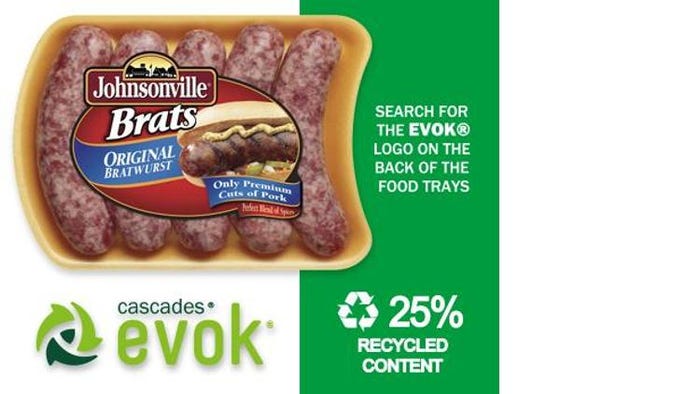
While Aveda has made dramatic strides in using PCR in primary packaging formats for bottles, tubs and jars that are largely recyclable, Aveda is also actively working to develop PP caps for tubes that are not currently recyclable. Debuting in early 2018, Aveda’s new dispensing closure will have 25% PCR, and the company plans to continue research and development to achieve a higher PCR content.
In the same way that closures alone are not recyclable due to their small size, lipstick and lip balm tubes are not recoverable either. Burt’s Bees, pursuing a similar strategy, uses 36% PCR in its iconic yellow lip balm tubes.
In the adjacent beauty industry, L’Oréal is also working to transform plastic packaging to use higher rates of PCR and used more than 7,000 tons of PCR in 2016. L’Oréal’s Biolage R.A.W., Aura Botanica by Kérastase and L’Oréal Paris Botanicals Fresh Care shampoo bottles all use 100% recycled plastic, with the exception of caps and pumps. L’Oréal brand Garnier Fructis has also made significant strides using PET that is 50% PCR. This is particularly important as many Garnier Fructis shampoos happen to be housed in opaque and or colored PET that is not considered optimal for recycling by APR.
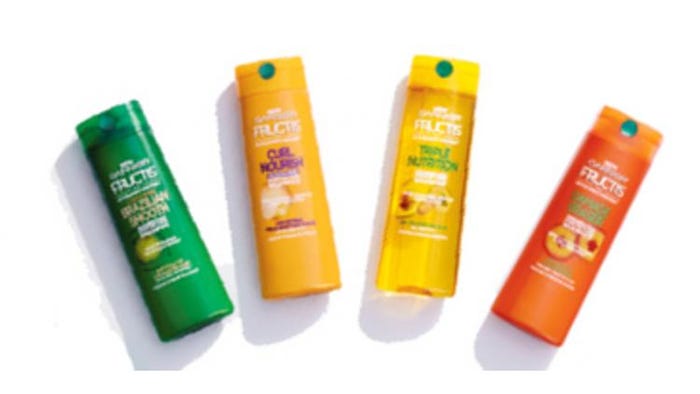
By using high rates of PCR, circularity is improved and demand for recyclable PET is increased, supporting recyclers and the industry as a whole.
Lush is another company in the beauty sector making outstanding progress in using PCR. All Lush pots and bottles are made with 100% PCR, but Lush’s “black pot” in particular represents an interesting case study as black PP suffers from difficulty in the sortation phases at material recovery facilities. Through a partnership with KW Plastics, the injection-molded container and lid has received FDA letters of non-objection for the entirely PCR format. Pedro Morales, director of sales and marketing for KW Plastics, explains, “We understood that our resin not only had to offer the environmental and economic advantages but performance was non-negotiable.”
While not recyclable through curbside programs at present time, Lush asks that customers return the black pots in-store.
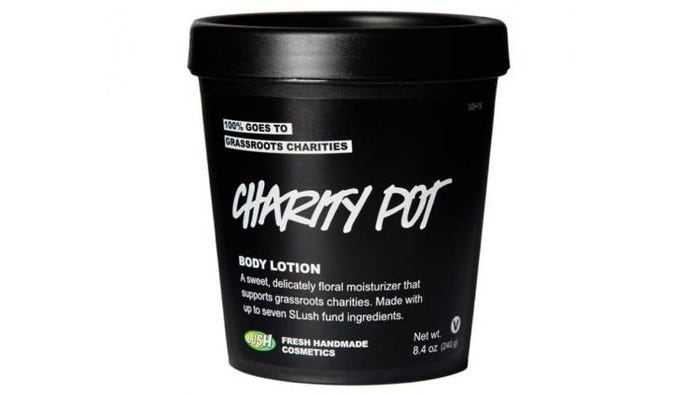
Producing PCR packages in high-recycling areas
Arrowhead water, another in the Nestlé Waters North America family, has worked to consistently increase PCR much like the achievement of Resource water. Because Arrowhead is manufactured in California, CEO/president of Nestlé Waters North America Tim Brown notes, “Thanks to California’s strong commitment to recycling, there is high-quality rPET available, enabling us to increase our use of recycled material.”
Since 2012, Arrowhead has used 86 million pounds of rPET, saving more than 69,000 tons of carbon emissions compared to virgin plastic. Crediting California’s high recycling rate of rigid plastics, it’s clear that Nestlé Waters North America is propelled by a consistent rPET stream that’s safeguarded by strong policies and legislation that lends a sense of security to the material stream.
Seeing signs of PCR in film packaging
While the application of PCR to rigid plastic packaging has been exponentially increasing, using PCR in plastic films has been a more nascent area of recycled content.
In recent years, new and exciting films have come to market with varying ranges of pre- and post-consumer recycled content and with a host of different possible applications. Ceisia Packaging, for example, has a film with 60% post-industrial recycled content and another with 40% post-consumer recycled content.
Klöckner Pentaplast has also developed SmartCycle post-consumer recycled content films for thermoform, as well as food and box packaging applications with PCR ranges from 25% to 100%. To complete a suite of PCR offerings, the materials manufacturer also has 25% and 50% PCR heat-seal products and 35% PCR RF-seal (radio frequency) offerings.
Yet, translation to products on-shelf have been slower to emerge than rigid plastic counterparts. Translating its progress adding PCR to rigid plastic formulations, Seventh Generation has been one of the early leaders in adding PCR to film applications. At present time, Seventh Generation’s film packages for baby wipes contain 25% PCR.
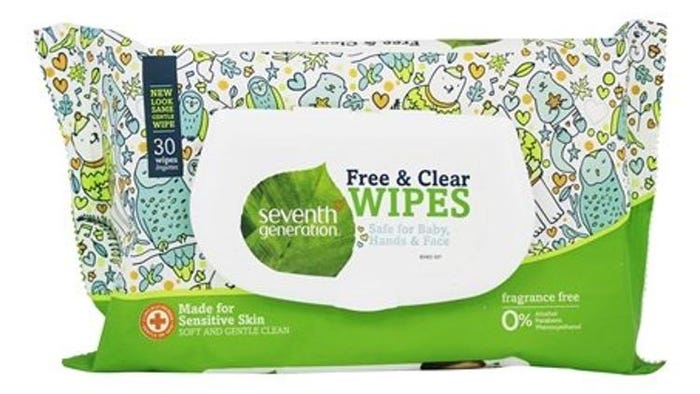
Implementing PCR in packaging portfolios and beyond
With the implementation of recycled content in plastic packaging yet to reach full maturity, brands and retailers have a big opportunity to make substantial commitments for PCR procurement that can bring stability to the resin marketplace. As one of the most important ways to develop demand-pull for recycled material, the development of public corporate goals are likely to fashion stronger collection and capital investment in processing infrastructure.
Target, for instance, has committed to stimulate “more demand for recycled packaging by creating three new end markets for recycled materials by 2020.” At the same time, Target’s also developing non-packaging applications for recycled plastic. The new Cat + Jack children’s line of clothing has incorporated recycled polyester from plastic bottles in denim, swimwear and other items. Moreover, Target aims to replace conventional polyester with recycled plastic in Target owned-brand apparel, accessories and home products.
This demonstrates the immense impact beyond packaging that many consumer packaged goods companies can have by applying rPET and other recycled materials to their broader product lines.
With numerous exemplary case studies of ambitiously pursuing complicated high-levels of PCR in consumer-facing packaging, as well as successful application of PCR to low-hanging fruit like transport packaging and non-recyclable packaging, industry has more role models than ever of how to make short-, medium- and long-term changes.
In years to come, we’re optimistic that more specific goals and commitments around the use of PCR will help build a more resilient and closed-loop system than ever.
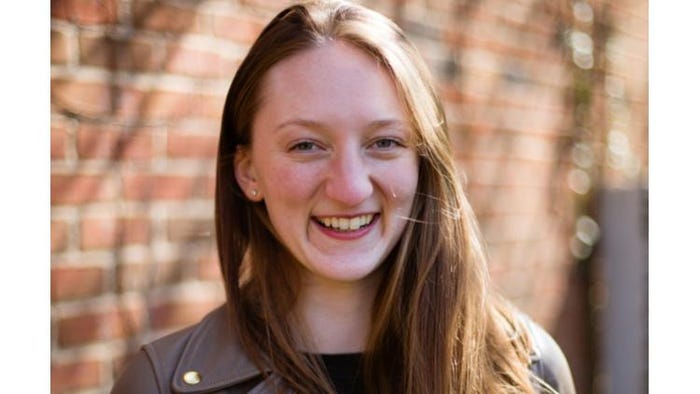
Charlotte Dreizen is a project manager at GreenBlue and leads the Composting Collaborative and compostable packaging work at the Sustainable Packaging Coalition. Since summer 2016, the Composting Collaborative has spearheaded research in pretreatment systems and composting access, as well as convened three in-person summits and kicked off a monthly webinar series. In addition, Dreizen co-developed the new Essentials of Sustainable Packaging course and has spoken at events like the New York City Food Waste Fair and the Green Sports Alliance Summit on organics recycling strategies. She holds a BA in International Affairs from the George Washington University with dual concentrations in Intl. Development and Intl. Environmental Studies. Dreizen is also a LEED Green Associate and has earned Living Future Accreditation through the Intl. Living Future Institute.
*******************************************************************************
A magic kingdom of packaging solutions: For packaging engineers, executives and designers—WestPack 2018 (Feb. 6-8; Anaheim, CA) delivers leading technologies, free educational presentations, hands-on demonstrations, exceptional networking opportunities and expert-led Innovation Tours. Register now!
About the Author(s)
You May Also Like


